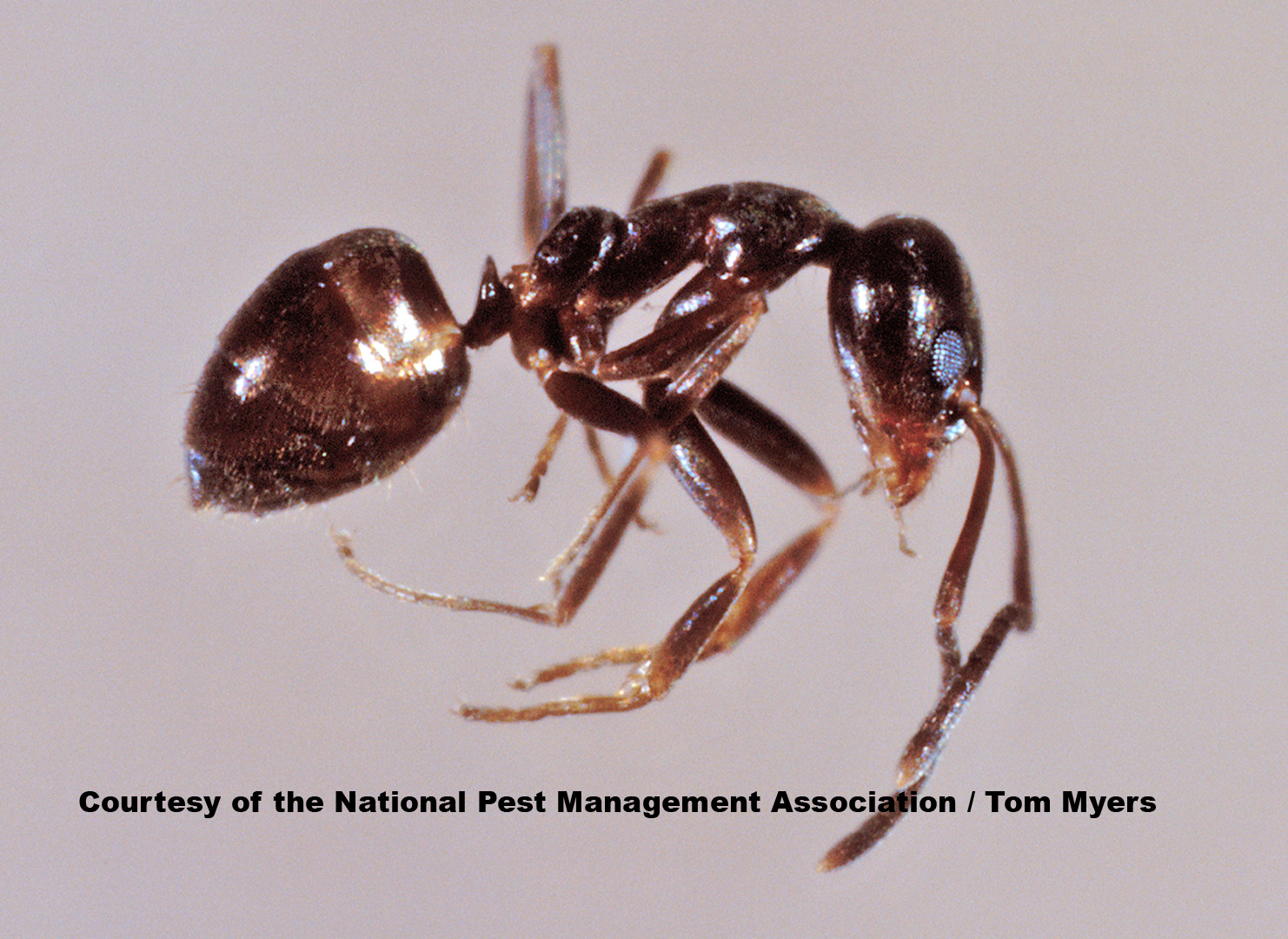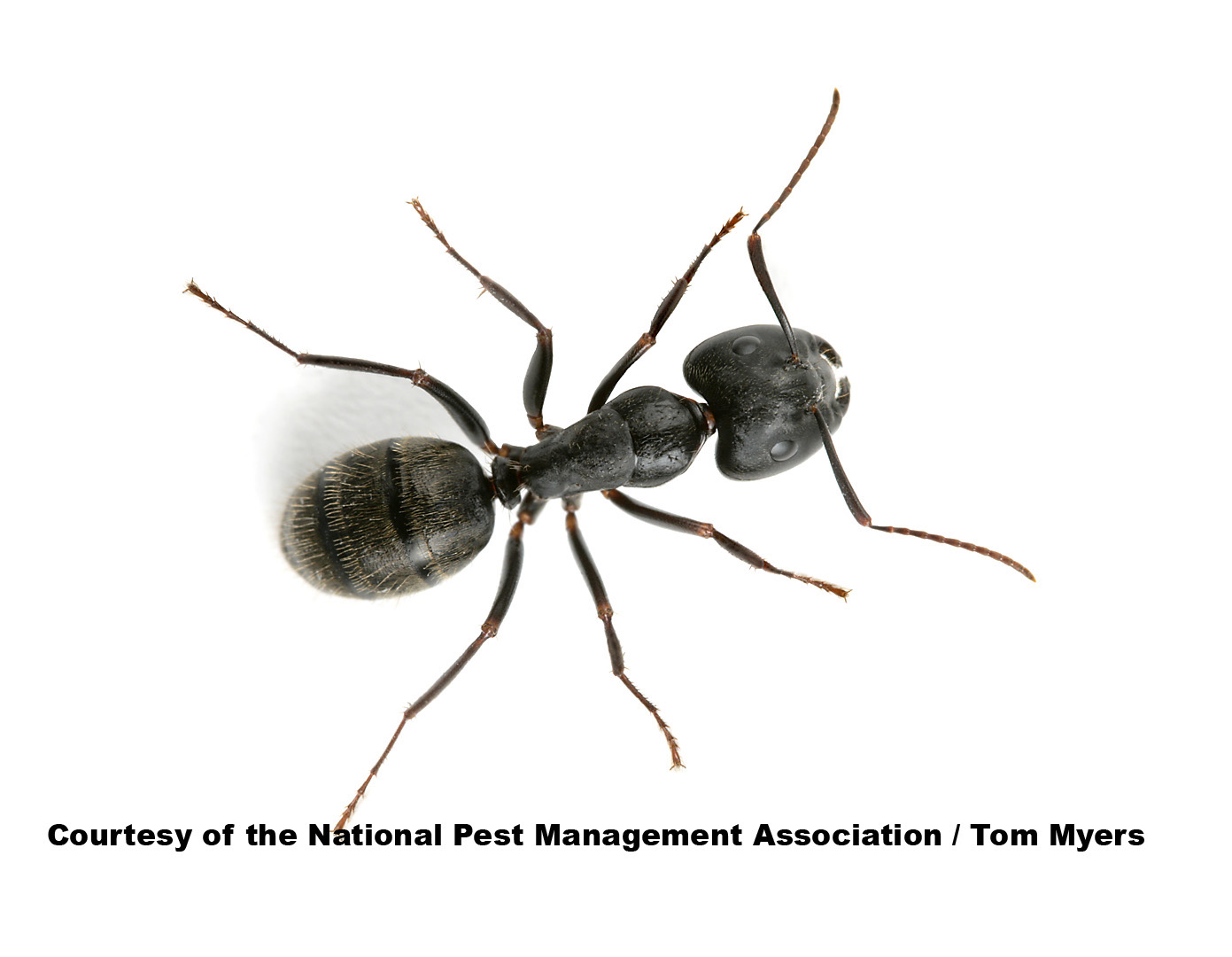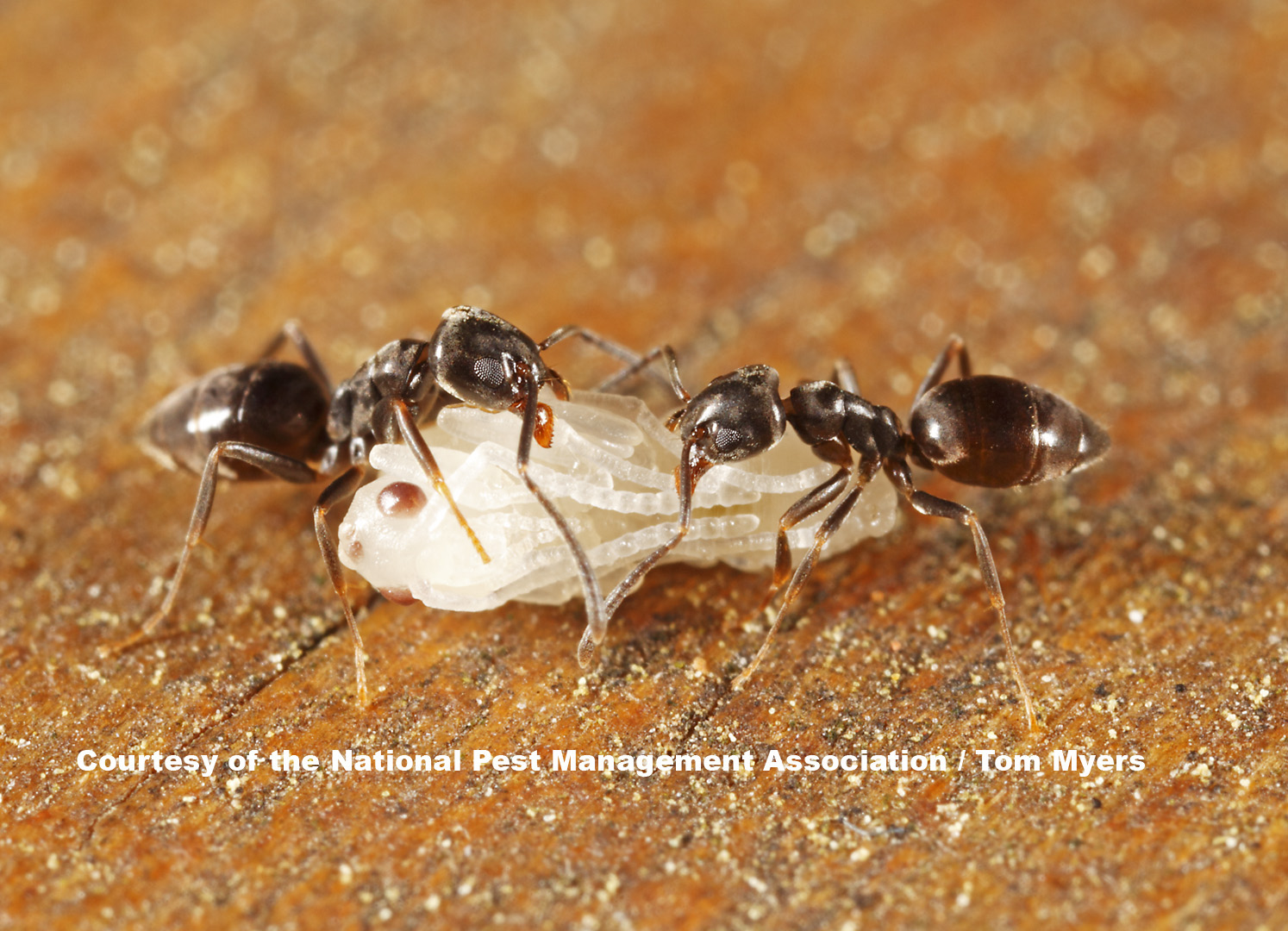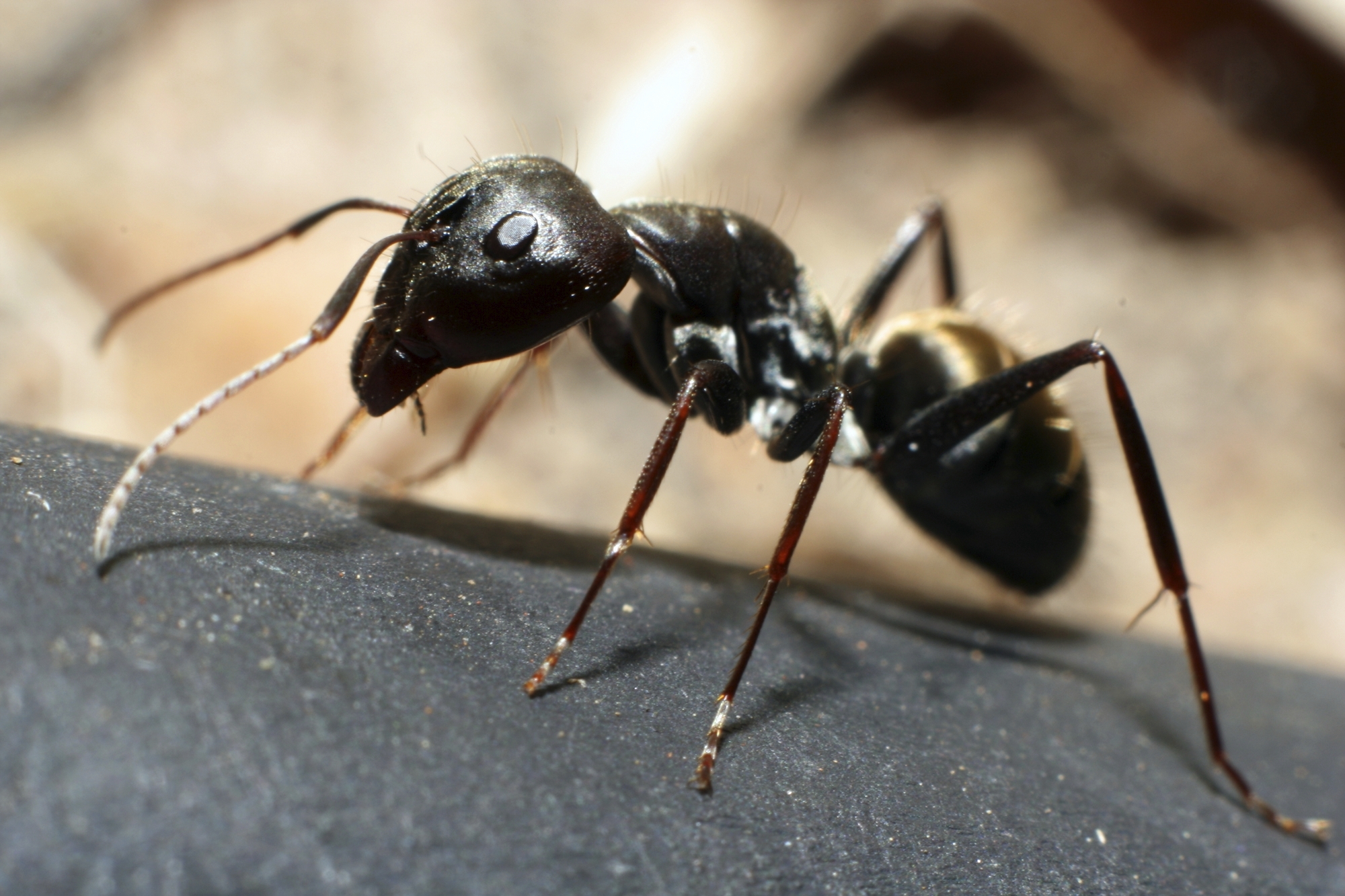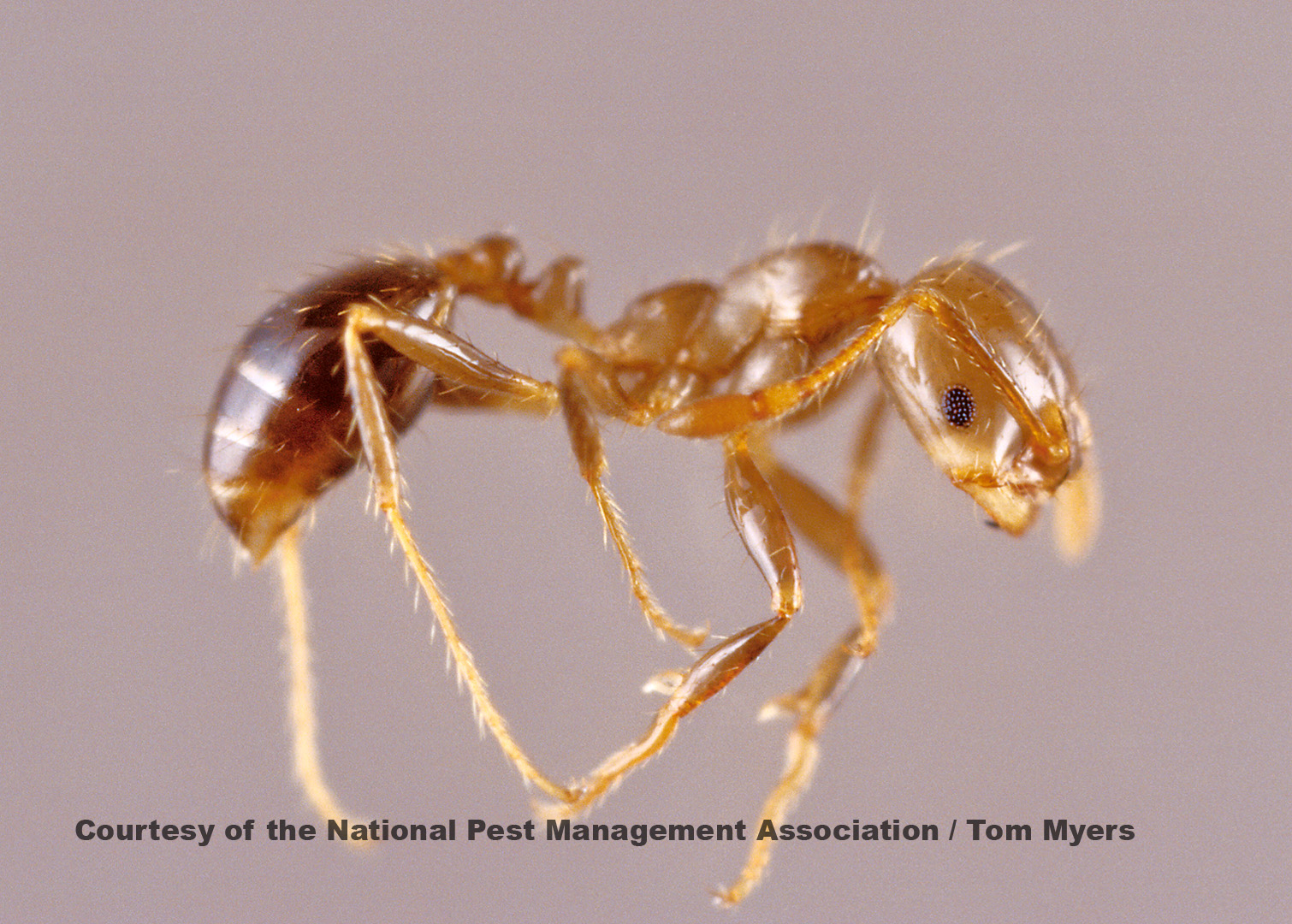Ants
Did you know? An ant can lift 20 times its own body weight.
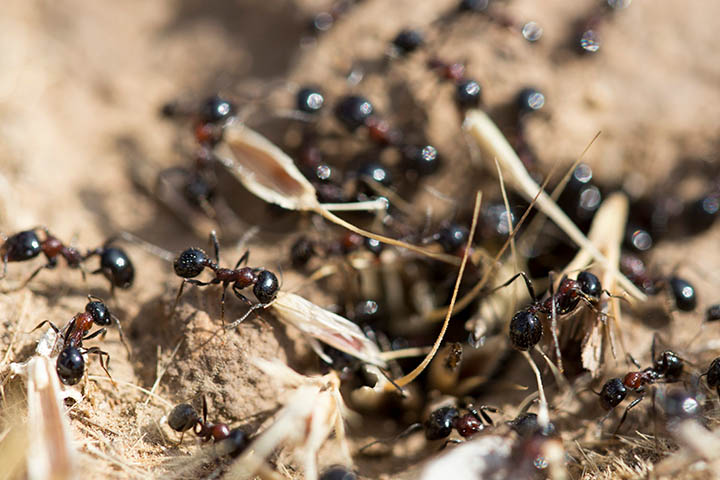
Explore Ants
Ant Facts for Kids
We’re all familiar with ants, right? Those tiny black insects that steal food off picnic blankets? But did you know ants can also be big, be colors other than black, and even have wings and fly? View some interesting facts about ants for kids below, help Archibald the ant complete his mission by playing the game Archibald’s Adventure, or learn how to make an egg carton ant!
- There are more than 12,000 different types of ants all over the world!
- Ants can lift 20 times their own body weight. If a second grader was as strong as an ant, they could pick up a car!
- Ant colonies are run by a single queen ant, who control all the other ants.
- Some queen ants can live for many years and have millions of babies.
- Ants don’t have ears. Ants "hear" by feeling rumbles in the ground through their feet.
- Ants don’t have lungs. Air enters and leaves through tiny holes all over their body.
- When ants fight, it is usually to the death!
- Ants leave invisible breadcrumbs (called a pheromone trail) everywhere they go, so they know where they’ve been.
- Worker ants can’t have babies. That means when a queen dies, the colony usually dies a few months later.
- Ants eat different kinds of foods depending on the type of ant, including sweet sugary foods or fatty oily foods.
- Ants communicate through scent, touch, motion, sound, and trophallaxis.
- You can make ants on a log with healthy snacks like celery and peanut butter!
Get to know ants:
There are 3 kinds of ants in a colony: The queen, the female workers, and males.
The queen and the males have wings, the workers do not. The queen is the only ant that can lay eggs. A male ant’s job is to mate with future queen ants. Once the queen is old enough to lay eggs, she spends the whole rest of her life laying eggs!
Some worker ants act as soldiers. They protect the colony, gather food, and fight other colonies for more food and space. If they beat another ant colony, they take the other colony’s eggs. When those eggs hatch, the new ants are forced to work for the new colony. They take care of the eggs and babies, find food for the colony, and build the anthills or mounds.
Argentine Ant Facts for Kids
This type of ant is from Argentina and Brazil and was probably introduced to the United States in freight ships around the 1890’s. These ants can be found in southern states as well as California, Illinois, Maryland, Missouri, Oregon and Washington.
- Size: 1/16" to 1/4"
- Shape: Segmented, Oval
- Color: Dark brown to black and shiny
- Legs: 6
- Wings: Varies
- Antenna: Yes
- Common Name: Argentine ant
- Kingdom: Animalia
- Phylum: Arthropoda
- Class: Insects
- Order: Hymenoptera
- Family: Formicidae
- Species: Linepithema humile
What Do Argentine Ants Eat?:
Argentine ants like sweet meals the best but will eat almost anything. That includes meats, eggs, oils and fats. They leave a scent trail everywhere they go so they don’t waste time visiting the same place twice. Unlike most ant types, Argentine queens help with finding food.
Where Do Argentine Ants Live?:
Argentine ant live in wet environments typically near a good food source. Their colonies can get huge, sometimes covering entire garden or even a whole back yard.
What Problems Do Argentine Ants Cause?:
You don’t really have to worry about Argentine ants trying to hurt you. But they can contaminate food by leaving their bodily waste behind. Yuck!
What Should I Do If I Find Argentine Ants?:
Talk to a grown-up right away. Since colonies can take over whole yards, it’s best to have a pest control professional deal with the situation immediately. You can find information on getting rid of Argentine ants at the official National Pest Management Association website.
Carpenter Ant Info for Kids & Adults
Carpenter ants get their name because they build their nests in wood. Unlike human carpenters who help fix your house, carpenter ants can cause major damage to a house. They put huge holes in the wood of your house to build their nests. The queen of a colony starts her nest deep within wood, then raises the baby carpenter ants there, feeding them saliva and never leaving the nest or feeding herself during this time.
When baby carpenter ants grow up, they become workers with the job of gathering food to feed the next generation. The colony population grows very quickly. It can eventually produce 2,000 or more workers.
There are many types of carpenter ants throughout the U.S., measuring in size from one-quarter inch (about the width of a pencil) for a worker carpenter ant to three-quarters of an inch (about the size of a quarter) for a queen carpenter ant. Read on for more fun carpenter ant facts for kids.
- Size: 5/8"
- Shape: Oval
- Color: Range in color from red to black
- Legs: 6
- Wings: Varies
- Antenna: Yes
- Common Name: Carpenter ant
- Kingdom: Animalia
- Phylum: Arthropoda
- Class: Insecta
- Order: Hymenoptera
- Family: Formicidea
- Species: Camponotus
What Do Carpenter Ants Eat?:
You may think carpenter ants eat wood, since they dig big holes into the wood. But no! They don’t eat any of it. They dig holes in wood but leave piles of it outside the entrance to their home. Instead, carpenter ants eat living and dead insects, meat, and fats and sugary foods of all kinds such as honeydew and nectar from plants.
Where Do Carpenter Ants Live?:
We know carpenter ants build nests in wood, but where? What type of wood do they prefer? Carpenter ants live anywhere they can find water and moldy or damp wood, such as tree stumps, firewood or in the plants around your house.
Carpenter ants also build nests inside, usually entering buildings through wet, damaged wood, although it isn’t uncommon for them to adapt to drier environments. You know you have a colony of carpenter ants if you see piles of sawdust on the floor.
What Problems Do Carpenter Ants Cause?:
The good news is that carpenter ants don’t carry disease and can’t really harm you physically. But when building a nest inside a home, they dig smooth tunnels through the wood. These tunnels weaken the wood and potentially damage the wood that keeps the house standing. This kind of damage can be very expensive to fix.
What Should I Do If I See Carpenter Ants?:
If you find sawdust on the floor near walls, show a grown-up immediately. A pest control professional will need to be called to assess the situation. You can find information on getting rid of carpenter ants at the official National Pest Management Association website.
Odorous House Ant Facts for Kids
Something that is odorous smells bad. The odorous house ant gets its name because it commonly nests in or around houses, and because it stinks when crushed. Imagine the smell of a rotten coconut. This is what you’ll smell if you step on one of these ants. They are from the United States, and they are very social. Colonies can include up to 100,000 ants!
- Size: 1/16" to 1/8"
- Shape: Segmented, oval
- Color: Brown or black
- Legs: 6
- Wings: Varies
- Antenna: Yes
- Common Name: Odorous house ant
- Kingdom: Animalia
- Phylum: Arthropoda
- Class: Insecta
- Order: Hymenoptera
- Family: Formicidae
- Species: Tapinoma sessile
What Do Odorous House Ants Eat?:
Odorous house ants like to eat dead insects and sugary sweets, especially melon.
Where Do Odorous House Ants Live?:
Odorous house ants live in the walls and floor cracks of homes. They may also live in exposed soil and under stones, logs, mulch, debris and other items. They typically have a lifespan of several years.
What Problems Do Odorous House Ants Cause?:
Odorous house ants do not pose a health threat, they can’t really hurt you. But the waste they leave behind when stealing food can contaminate that food. They can also become a huge annoyance, with colonies so large in or near your home, crawling all over your kitchen, and of course stinking up the place if you try to crush them under your shoe or an object.
What Should I Do If I Find Odorous House Ants?:
Don’t squish them! There may be too many to deal with anyway. The better thing to do is have a grown-up speak with a pest control professional to determine the best way to get odorous house ants out of your house. You can find more information on finding the right pest control professional at the official National Pest Management Association website.
Pavement Ant Facts for Kids
Pavement ants are so named because they like to make their nests in or under cracks in pavement. But don’t be fooled — they can also live inside buildings. They are typically found in the eastern half of the United States, California and Washington. Pavement ant colonies average 3,000 to 4,000 members and have several queens.
- Size: 1/8"
- Shape: Segmented, oval
- Color: Dark brown to black
- Legs: 6
- Wings: Varies
- Antenna: Yes
- Common Name: Pavement ant
- Kingdom: Animalia
- Phylum: Arthropoda
- Class: Insecta
- Order: Hymenoptera
- Family: Formicidae
- Species: Tetramorium caespitum
What Do Pavement Ants Eat?:
Pavement ants will eat almost anything! This includes insects, seeds, honeydew, honey, bread, meats, nuts, cheese, and even grease.
Where Do Pavement Ants Live?:
Pavement ants most commonly live in soil next to and beneath pavement slabs, sidewalks, patios, and driveways. They may also build nests under a building’s foundation and hollow foundation walls.
Are Pavement Ants Harmful?:
Don’t worry about pavements ants too much. They don’t pose a health threat and can’t cause too much damage to your home. They can contaminate your food, though! If you find pavement ants, make sure you get professional help to remove them.
What Should I Do If I See Pavement Ants?:
As with any ants, if you see a number of pavement ants around your food or throughout your house, show a grown-up, so they can call a pest control professional. An expert will come in to review the situation and figure out the best way to solve it. This goes for if you find ants in your driveway or sidewalk as well. You can learn more about this at the official National Pest Management Association website.
Red Imported Fire Ant Facts for Kids
Red imported fire ants may have a cool name, and an even cooler nickname (RIFA). But be warned: they are more aggressive than other ant species on the planet. And they have a really painful sting. They should always be avoided!
Red imported fire ants can adapt to many climates and conditions in and around their environment. For example, if the colony senses increased water levels in their nests, they will come together and form a huge ball or raft that is able to float on the water! So yes, they are cool. But very dangerous. Read on to learn more red imported fire ant information for kids.
- Size: 1/8" to 3/8"
- Shape: Segmented, oval
- Color: Dark reddish brown
- Legs: 6
- Wings: Varies
- Antenna: Yes
- Common Name: Red imported fire ant
- Kingdom: Animalia
- Phylum: Arthropoda
- Class: Insecta
- Order: Hymenoptera
- Family: Formicidae
- Species: Solenopsis invicta
What Do Red Imported Fire Ants Eat?:
Red imported fire ants primarily eat vegetation. That’s right — even though they will bite people, they can be considered vegetarians. They aren’t biting you to eat or to be mean, but to defend themselves. After all, you’re a lot bigger than they are.
Where Do Red Imported Fire Ants Live?:
Red imported fire ant live in very noticeable mounds. These mounds are huge, sometimes a whole foot tall, and typically in the shape of a dome. They like to build these mounds outdoors out of soil, usually in landscape areas like grass or near a building’s foundation. They occasionally enter buildings through holes or cracks in walls and foundations.
Are Red Ants Harmful to Humans?:
Yes! Red imported ants do cause harm. The sting (bite) of a red imported fire ant is very painful and often results in a raised welt that becomes a white blister. People who are allergic to insect stings will react even more severely. Plus, the building of their big mounds can damage plant roots and lead to loss of crops.
What Should I Do If I See Red Imported Fire Ants?:
The first thing to do if you see important fire ants is to get away from them. If they start crawling on you, they are likely to bite you, and if there are a bunch of them, that could result in a lot of pain.
Next, immediately ask a grown-up to call a pest control professional. Other types of ants are annoying and can contaminate your food, but at least they can’t physically hurt you. You want these ants away from your house as quickly as possible. There is more info on red imported fire ants and how to get rid of them at the official National Pest Management Association website.
Also watch red imported fire ants face off with Formosan termites on episode 3 of Bug Battles!


